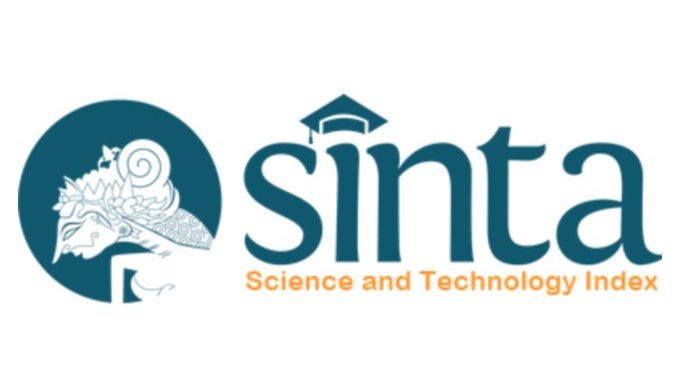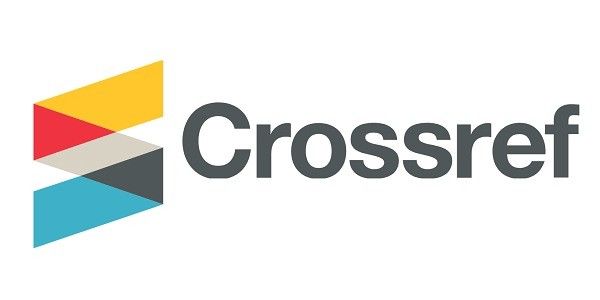Sel Punca sebagai Terapi Regenerasi Potensial Kasus Ortopedi
DOI:
https://doi.org/10.55175/cdk.v50i2.531Keywords:
Cedera muskuloskeletal, ortopedi, sel puncaAbstract
Cedera muskuloskeletal merupakan masalah kesehatan global; namun, metode pengobatan yang paling efektif masih kontroversial. Terapi sel punca telah menjadi populer di bidang ortopedi, terutama untuk kasus cedera muskuloskeletal yang melibatkan tendon, ligamen, tulang, meniskus, dan tulang rawan. Beberapa studi praklinis telah menggunakan terapi sel punca. Penelitian lebih lanjut diperlukan untuk mengevaluasi keamanan dan efektivitas sel punca pada kasus - kasus ortopedi.
Musculoskeletal injuries are a global health problem, however, its most effective management are still controversial. Stem cell therapy has been popular in the field of orthopaedics, especially for cases of musculoskeletal injuries involving tendons, ligaments, bones, meniscus, and cartilage. Several preclinical studies have been conducted. Further research should be done to evaluate its safety and effectiveness, especially in orthopaedics cases.
Downloads
References
Bilgic S, Durusu M, Aliyev B, Akpancar S, Ersen O, Yasar SM, et al. Comparison of two main treatment modalities for acute ankle sprain. Pak J Med Sci. 2015;31(6):1496–9.
Tucker BA, Karamsadkar SS, Khan WS, Pastides P. The role of bone marrow derived mesenchymal stem cells in sports injuries. J Stem Cells. 2010;5(4):155-66.
Desiderio V, De Francesco F, Schiraldi C, De Rosa A, La Gatta A, Paino F, et al. Human Ng2+ adipose stem cells loaded in vivo on a new crosslinked hyaluronic acid-Lys scaffold fabricate a skeletal muscle tissue. J Cell Physiol. 2013;228(8):1762–73.
Moshiri A, Oryan A, Meimandi-Parizi A. Role of stem cell therapy in orthopaedic tissue engineering and regenerative medicine: a comprehensive review of the literature from basic to clinical application. Hard Tissue. 2013;20;2(4):31.
Wang Y, Zhao L, Hantash BM. Support of human adipose derived mesenchymal stem cell multipotency by a poloxameroctapeptide hybrid hydrogel. Biomaterials. 2010;31(19):5122–30.
Gutierrez-Aguirre CH, Gomez-De-Leon A, Alatorre-Ricardo J, Cantu-Rodriguez OG, Gonzalez-Llano O, Jaime-Perez JC, et al. Allogeneic peripheral blood stem cell transplantation using reduced-intensity conditioning in an outpatient setting in ABO-incompatible patients: are survival and graft-versus-host disease different ? Transfusion. 2014;54(5):1269–77.
Costela-Ruiz VJ, Rodriguez LM, Bellotti C, Montes RI, Stanco D, Arciola CR, et al. Different sources of mesenchymal stem cells for tissueregeneration: a guide to identifying the most favorable onein orthopedics and dentistry applications. Int. J. Mol. Sci.2022;23:6356
Udehiya RK, Aithal HP, Kinjavdekar P, Pawde AM, Singh R, et al. Comparison of autogenic and allogenic bone marrow derived mesenchymal stem cells for repair of segmental bone defects in rabbits. Res Vet Sci. 2013;94(3):743–52.
Chen M, Le DQ, Kjems J, Bunger C, Lysdahl H. Improvement of distribution and osteogenic differentiation of human mesenchymal stem cells by hyaluronic acid and beta-tricalcium phosphate-coated polymeric scaffold in vitro. Biores Open Access. 2015;4(1):363–73.
Colosimo A, Rofani C, Ciraci E, Salerno A, Oliviero M, Maio ED, et al. Osteogenic differentiation of CD 271 (+) cells from rabbit bone marrow cultured on three phase PCL/TZ-HA bioactive scaffolds: comparative study with mesenchymal stem cells (MSCs). Int J Clin Exp Med. 2015;8(8):13154–62.
Anderson DJ, Gage FH, Weissman IL. Can stem cells cross lineage boundaries?. Nature Med. 2001;7(4):393-95.
Giannotti S, Trombi L, Bottai V, Ghilardi M, D’Alessandro D, Danti S, et al. Use of autologous human mesenchymal stromal cell / fibrin clot constructs in upper limb non-unions: long-term assessment. PloS One. 2013;8(8):73893.
Grgurevic L, Macek B, Mercep M, Jelic M, Smoljanovic T, Erjavec I, et al. Bone morphogenetic protein (BMP) 1-3 enhances bone repair. Biochem Biophys Res Commun. 2011;408(1):25–31.
Sykova E, Homola A, Mazanec R, Lachmann H, Konradova SL, Kobylka P, et al. Autologous bone marrow transplantation in patients with subacute and chronic spinal cord injury. Cell Transplant. 2006;15(8-9):675–87.
Zhou YJ, Liu JM, Wei SM, Zhang YH, Qu ZH, Chen SB. Propofol promotes spinal cord injury repair by bone marrow mesenchymal stem cell transplantation. Neural Regen Res. 2015;10(8):1305-11.
Roseti L, Grigolo B. Current concepts and perspectives for articular cartilage regeneration. J Experimental Orthopaedics. 2022;9(61):1-7.
Ibanez L, Guillem-Liobat P, Marin M, Isabel Guillen M. Connection between mesenchymal stem cells therapy and osteoclast in osteoarthritis. Int. J. Mol. Sci. 2022;23:1-21.
Cheng A,Hardingham TE,Kimber SJ. Generating cartilage repairfrom pluripotent stem cells. Tissue Eng Part B Rev. 2014;20(4):257–66.
Murdoch AD, Hardingham TE, Eyre DR, Fernandes RJ. The development of a mature collagen network in cartilage from human bone marrow stem cells in Transwell culture. Matrix Biol. 2016;50:16–26.
Zhu S, Zhang B, Man C, Ma Y, Liu X, Hu J. Combined effects of connective tissue growth factor-modified bone marrow-derived mesenchymal stem cells and NaOHtreated PLGA scaffolds on the repair of articular cartilage defect in rabbits. Cell Transplant. 2014;23(6):715-27.
Saether EE, Chamberlain CS, Leiferman EM, Kondratko-Mittnacht JR, Li WJ, Brickson SL, et al. Primed mesenchymal stem cells alter and improve rat medial collateral ligament healing. Stem Cell Rev. 2015;10(1):1-12.
Mastri M, Shah Z, McLaughlin T, Greene CJ, Baum L, Suzuki G, et al. Activation of Toll-like receptor 3 amplifies mesenchymal stem cell trophic factors and enhances therapeutic potency. Am J Physiol Cell Physiol. 2012;303(10):1021-33.
Liotta F, Angeli R, Cosmi L, Fili L, Manuelli C, Frosali F, et al. Toll-like receptors 3 and 4 are expressed by human bone marrow-derived mesenchymal stem cells and can inhibit their T-cell modulatory activity by impairing Notch signaling. Stem Cells. 2008;26(1):279-89.
Yokoya S, Mochizuki Y, Natsu K, Omae H, Nagata Y, Ochi M. Rotator cuff regeneration using a bioabsorbable material with bone marrow derived mesenchymal stem cells in a rabbit model. Am J Sports Med. 2012;40(6):1259-68.
Louw QA, Manilall J, Grimmer KA. Epidemiology of knee injuries among adolescents: a systematic review. Br J Sports Med. 2008;42(1):2-10.
Adams SJ, Thorpe MA, Parks BG, Aghazarian G, Allen E, Schon LC. Stem cell-bearing suture improves Achilles tendon healing in a rat model. Foot Ankle Int. 2014;35(3):293–9.
Hatsushika D, Muneta T, Nakamura T, Horie M, Koga H, Nakagawa Y, et al. Repetitive allogeneic intraarticular injections of synovial mesenchymal stem cells promote meniscus regeneration in a porcine massive meniscus defect model. Osteoarthritis Cartilage. 2014;22(7):941–50.
Freitag J, Wickham J, Shah K, Tenen A. Real-world evidence of mesenchymal stem cell therapy in knee osteoarthritis: a large prospective two-year case series. Regenerative Med. 2022;17(6):355-73.
Bowers K, Amelse L, Bow A, Newby S, MacDonald A, Sun X, et al. Mesenchymal stem cell use in acute tendon injury: in vitrotenogenic potential vs. In vivo dose response. Bioengineering.2022;9(407):1-22.
Trebinjac S, Gharairi. Mesenchymal stem cells for treatment of tendon and ligament injuries-clinical evidence. Med Arch. 2020;74(5):387-90.
Wang HN, Rong X, Yang LM, Hua WZ, Ni GX. Advances in stem cell therapies for rotator cuff injuries. Front Bioeng Biotechnol. 2022;10: 866195.
Chun SW, Kim W, Lee SY, Lim CY, Kim K, Kim JG, et al. A randomized controlled trial of stem cell injection for tendon tear. Scient Rep. 2022;12(818):1-10
Downloads
Published
How to Cite
Issue
Section
License
Copyright (c) 2023 https://creativecommons.org/licenses/by-nc/4.0/

This work is licensed under a Creative Commons Attribution-NonCommercial 4.0 International License.





















